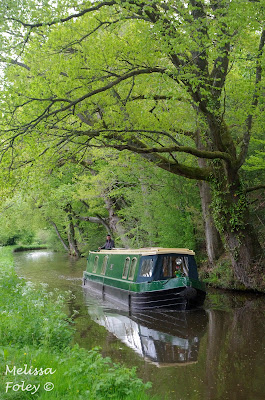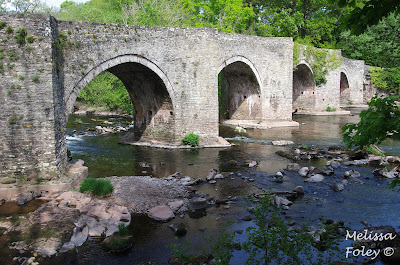For all of the years Pete and I have been together, he has been insistent that he would never own a boat because they are the ultimate money pit. As a boat captain, he is quite aware of the cost to maintain boats, so I have never questioned his stance. So imagine my surprise when, after stumbling upon a show about narrowboats during the pandemic, he started talking about buying a narrowboat and retiring to the English countryside. For those of you unfamiliar with the term, a narrowboat is a very narrow houseboat built to travel the canals found in the UK.
While trying to come to terms with this rapid shift in thinking, I suggested we try it before we buy it. Before long, he had picked a canal, a rental company, and a boat, and made a reservation during the week of his 46th birthday. Pete is not usually the travel planner, but the sudden loss of multiple friends and colleagues over the last few years, in addition to the pandemic, inspired him to seize the day and make it happen.
For our inaugural narrowboat adventure, we spent a week on the Monmothshire and Brecon Canal, shortened to the Mon & Brec, in southern Wales. The canal is 36 miles long and is one of the few in the UK that is not connected to any other canals. The extensive canal system throughout the UK fell into disrepair when rail surpassed barges as the dominant means of moving goods around the country. Over time, however, the Canal and River Trust (C&RT) has been restoring the network of canals. Without a direct connection to any other canals, we assumed the amount of boat traffic on the canal would be less than some of the other canals, which sounded nice for our first outing. Pete was also drawn to the Mon & Brec because it runs through Brecon Beacons National Park, providing us lots of opportunities for walks in the countryside and beautiful vistas. The area around the canal is a World Heritage Site because of its prominence as a major center of coal, limestone, and iron ore mining and iron production. The canal was used to move a lot of those goods and limestone kilns were quite prominent along the canal.
Our rental company, Beacon Park Boats (BPBs), is located roughly in the middle of the 36-mile canal, which meant that we did two out and back legs to travel most of the canal. The recommended itinerary had us going to the north first. After looking at the weather forecast, though, we decided to head south so we would hopefully avoid having to navigate the flight of locks in the rain. We hoped that a reverse itinerary would also make for less competition for mooring spots at the end of the day.
We were allowed to pick up the boat at 2:30 pm on the first day. This in itself was a spectacle. When we were dropped off by our taxi at the gate of BPBs at about 2:15, there was a line of cars waiting to get in. Promptly at 2:30, the automatic gate opened and the cars streamed through, everyone eager to get on their boat and start their holiday. We had dropped our bags off earlier that morning and the amazing staff had already loaded our bags AND put away our groceries, which meant we had a head start on most of the others. After watching a safety video and getting some additional instruction about the boat, a staff member hopped on board and off we went for our training drive. Within about fifteen minutes, Pete was deemed a worthy boat handler, so the staffer stepped off the boat at the first bridge and we were on our own for the next seven days.
Our home for the week was Heron, a beautiful 57-foot long, 7-foot wide narrowboat. We spent 10 days on a canal boat on the Canal du Midi in Southern France in 2017, but this was a completely different experience. First, the boat was 20 feet longer and about half as wide. This made maneuvering the boat very challenging and took some getting used to. Thank goodness for bow thrusters! Second, the boats in the UK have septic tanks, which was a welcome change from our previous experience (yes, that means the Canal du Midi is filled with poo!). Third, there are no paid C&RT staff on the canal, so we got to operate the locks and drawbridges ourselves. Occasionally volunteers were around to help make sure people were operating the locks correctly and to direct traffic when boats were coming up and going down through the locks. Finally, the Mon & Brec was a much narrower canal than the Canal du Midi, with many stretches barely wide enough for two boats to pass. There were also a lot of blind sweeping turns, so we used our horn frequently to alert others to our presence. Similar to the Canal du Midi, there was a tow path along the entire length of the canal. This path exists because barges were originally towed by horses. Now they are a fantastic recreation path for walkers, runners, and bikers.
it to us while she was walking alongside the boat.
Look how long that boat is!
and proceeded through the salon, galley, head, bedroom, and bow
While the Mon & Brec is short, it has most of the features of a longer canal, including locks, drawbridges, aqueducts (bridge of water over water), and a tunnel. Most of these features are situated at the northern end of the canal, which was another good reason to go south first. We got to go through the tunnel, up a lock, and cross the longest aqueduct on Pete's birthday. We also got our only significant rainstorm that evening. Rain would have made for a quite different trip since you have to stand outside in the elements to drive the boat. We were prepared for that possibility, but fortunately did not have to put it to use.
As we prepared for our trip, we (mostly Pete) watched vlogs from narrowboaters on various canals in the UK. One of the things that always made me laugh was their comments about all the "amazing" wildlife on the canals. This typically included mallard ducks and sheep. Because we were in a national park, I had slightly higher hopes for wildlife but my expectations were still pretty low. We did, in fact, see mallards and sheep galore (including babies of both), and also saw fox, herons, white-throated dippers, pheasants, moorhens, and an ornate and unexpected mannequin duck.
Brecon Beacons is a national park, but that designation has a slightly different meaning than in the US. While the US government tends to kick people out of areas designated as national parks, significant populations of people have been in these places far too long to remove them, in addition to Briton being a small island. In practice this means there are picturesque villages along the canal every 3-5 miles. Many are dotted with structures that are hundreds to thousands of years old, mostly stone, set on narrow streets and surrounded by green fields. The green fields are mostly sheep paddocks, but they were so beautiful to our drought-adjusted California eyes. It was also the height of spring, so trees and flowers were blooming, adding to the loveliness.
Halfway through our week, Pete was already researching the various ways to get residency status in the UK. While we are unlikely to qualify for any of them, we can get a six month visitor visa at any point. That seems like plenty of time to share a very small space with another human. And really, who wants to spend the winter in cold, rainy England?! Most importantly, Pete was really happy with our adventure and is already planning our next narrowboat adventure.










































